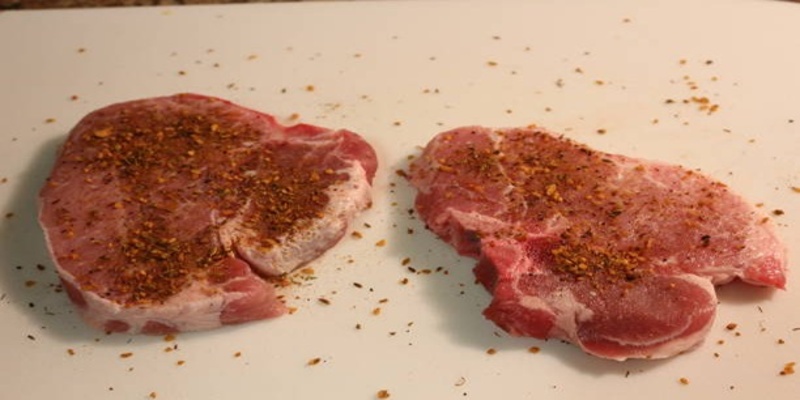Avoiding Food Poisoning: Recognize Spoiled Meat with These Tips
Feb 26, 2024 By Madison Evans
Foodborne illnesses can be an unpleasant experience, at best. At worst, they can lead to severe health complications. Recognizing spoiled meat is essential in preventing food poisoning, a responsibility that rests on the shoulders of both consumers and food handlers. Fresh meat is a perishable item that can harbor a range of harmful bacteria and pathogens if not treated or stored properly. From the store to your plate, various signs can indicate whether the meat is still good to eat or if it poses a risk to your health. In this guide, we'll share some critical tips that will help you identify spoiled meat, ensuring that what you cook and consume is not only delicious but also safe.
What is Considered Spoiled Meat?

In simple terms, spoiled meat is any meat that has gone bad and is no longer suitable for consumption. This can happen due to various factors such as improper storage, cross-contamination, or exposure to harmful bacteria. The most common types of spoilage in meat are physical changes like discoloration, texture changes, off-odors, and slime formation. Spoiled meat can also harbor harmful pathogens that can cause foodborne illnesses, making it essential to recognize and avoid consuming it.
1.Smell Test
The most reliable and straightforward way to tell if your meat has gone bad is by using your sense of smell. Spoiled meat will have a distinct unpleasant odor that can range from sour, rancid, or foul. If the smell is strong enough to make you recoil, it's likely that the meat has spoiled. Even if there are no visible signs of spoilage, it's best to trust your nose and discard the meat.
How Different Meats Should Smell When Fresh?
Different types of meats can have distinct smells when they are fresh. For example, beef has a slightly sweet smell, while pork has a more savory aroma. Chicken and fish should both have a mild, clean scent when fresh. It's essential to familiarize yourself with the typical smell of various meats so that you can easily identify when something is off.
2. Visual Inspection
In addition to using your sense of smell, you can also visually inspect the meat for any signs of spoilage. Look out for discoloration, particularly in areas that would typically have a bright red or pink color. The texture of the meat can also be an indicator - if it appears slimy, sticky, or dry and shriveled, it's likely that it has spoiled.
Check the Sell-by Date
If you're buying pre-packaged meat from a store, always check the sell-by date before purchasing. This date indicates when the store should sell the meat by, and if the meat is past this date, it's best to avoid buying it. The sell-by date is not an expiration date, but rather a guideline for retailers to ensure the meat is fresh and safe for consumption.
3. Pay Attention to Packaging
The packaging of meat can also provide useful information on its freshness. Make sure to check for any tears, holes, or leaks in the packaging, as these can allow harmful bacteria to enter and spoil the meat. If you notice any damage, it's best to avoid buying or consuming the meat.
Look for Proper Storage Conditions
If you're purchasing meat from a butcher, make sure to observe how the meat is stored. It should be kept at a safe temperature - below 40°F - and away from other potentially contaminated foods. If the meat is not stored properly, it's more likely to spoil quickly.
4. Be Aware of Cross-Contaminated Meat
Cross-contamination occurs when harmful bacteria from one food item transfers to another. This can happen if you use the same cutting board, plate, or knife for raw meat and other foods without properly cleaning them in between. To avoid cross-contamination, always wash your hands and surfaces thoroughly after handling raw meat.
Cook Thoroughly
Properly cooking meat is essential in killing any harmful bacteria that may be present. Use a thermometer to ensure that the internal temperature of the meat reaches the recommended safe level for consumption. This is especially important for ground meats, which have a higher risk of contamination.
Storage Tips for Meat

To prevent meat from spoiling, it's essential to store it properly. Here are a few tips to keep in mind:
- Refrigerate or freeze raw meat as soon as possible after purchasing.
- Make sure your refrigerator is set at the correct temperature - below 40°F.
- Store raw meats on the bottom shelf of your fridge to avoid cross-contamination with other foods.
- Use raw meat within 1-2 days or freeze it for longer storage.
- If defrosting frozen meat, do so in the fridge or under cold running water, never at room temperature.
By following these simple tips, you can avoid spoiled meat and reduce your risk of food poisoning. Remember to always trust your senses and take necessary precautions when handling and consuming meat.
Conclusion
Spoiled meat can pose significant health risks, making it crucial to recognize and avoid consuming it. By using your senses, paying attention to packaging and storage conditions, and practicing proper food handling techniques, you can ensure that the meat you consume is not only delicious but also safe. Remember these tips the next time you purchase or handle meat to stay healthy and enjoy your meals without worry. So, always be aware of what is considered spoiled meat and make informed decisions when it comes to your food. Stay safe and happy eating!







